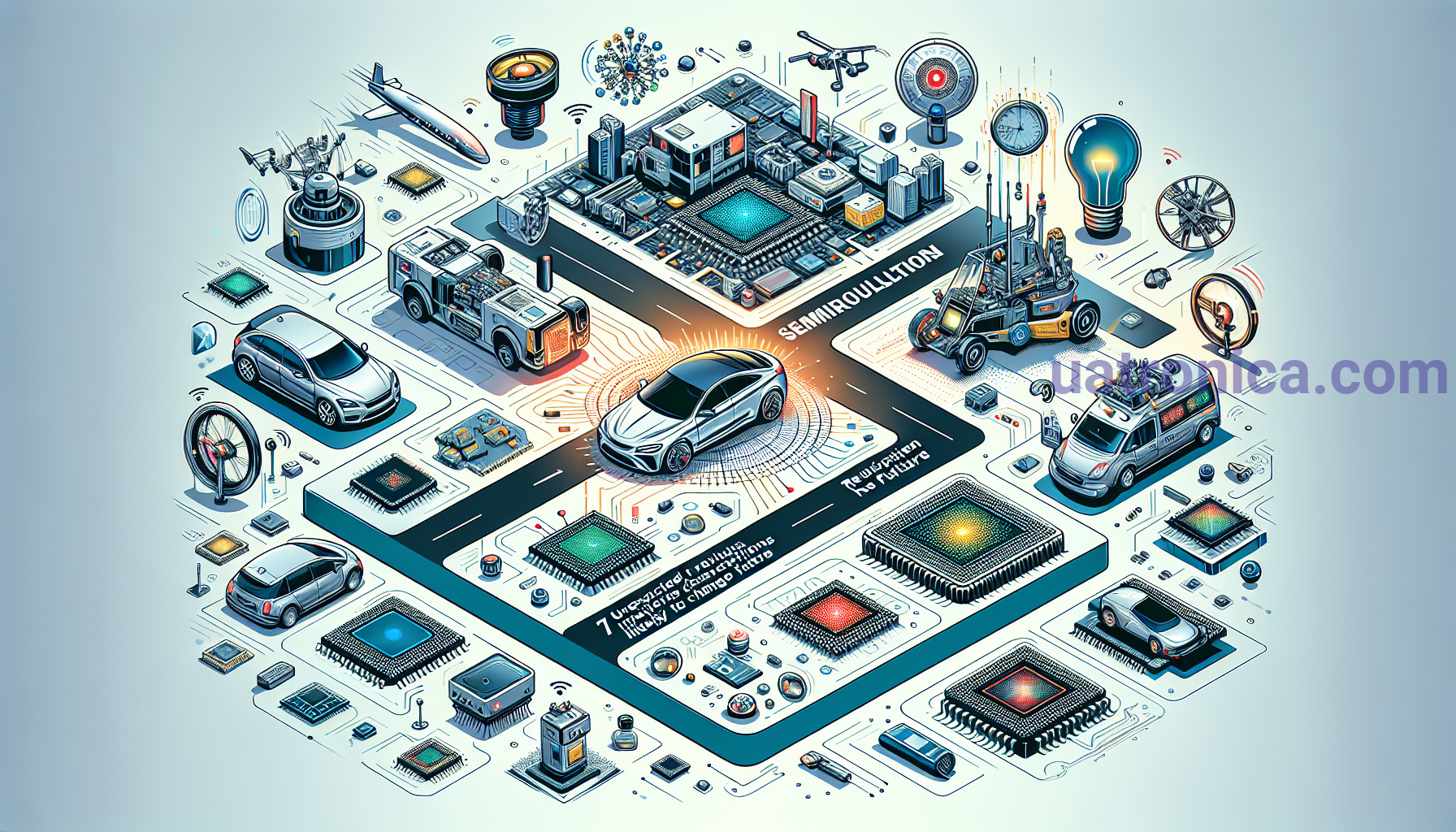7 Unexpected Technological Revolutions in Semiconductors: How It Will Change Your Future
Semiconductors are the foundation of modern technology, influencing everything from simple gadgets to complex computing systems. This is a constantly evolving sector, and we are currently witnessing a number of technological revolutions that could fundamentally change our future. Let's take a look at seven major innovations in the semiconductor industry and how they can impact our daily lives.1. New Materials: Graphene and Hexadoped Compounds
# What is graphene?
Graphene is a single-layer carbon material that has unparalleled electrical and mechanical properties. Its conductivity can exceed even copper, and it is also characterized by high strength and lightness. Thanks to these properties, graphene can potentially replace silicon in semiconductor manufacturing.# Hexavalent compounds
These compounds, such as molybdenum disulfide (MoS2), offer new possibilities for small-scale electronic devices. They can allow the creation of more compact and powerful transistors.
Advantages of graphene and hexavalent compounds: – High electrical conductivity – Reduction of energy costs – Greater resistance to heating2. Quantum Computers: A Revolution in Data Processing
Quantum computers represent a new approach to information processing. They use quantum bits (qubits), which can be in several states at the same time, unlike classical bits, which allow information to be processed many times faster.
# How will this change your work?
1. Acceleration of calculations: Quantum computers can solve complex problems in seconds that would take traditional computers thousands of years. 2. Improved encryption: They have the potential to create new methods of protecting data from hacking. Research in this area is actively funded, in particular, by such companies as IBM and Google.3. 5G and the Internet of Things: New Opportunities for Semiconductors
With the development of 5G, new requirements for semiconductor devices appear. Higher data rates will require new chips and products.# 5G Applications in Semiconductors:
– Connecting smart equipment – Augmented reality and virtual reality – Intelligent control systemsOn the example of the table below, you can visualize the difference between 4G and 5G in data transfer speed values:
| Parameter | 4G | 5G | |———————|————————|————————-| | Transmission speed | 100 Mbps | 10 Gbps | | Delay | 30-50 ms | Less than 1 ms | | Number of connections | 2,000 per square km 1,000,000 per square km4. Energy-saving Technologies: Reducing Energy Consumption
Modern technologies increasingly emphasize energy efficiency. Semiconductors that consume less energy are becoming key to sustainable development.# Main achievements:
– Use of GaN (gallium nitride) instead of silicon in high voltage applications. - Creation of multifunctional chips that reduce energy consumption.5. Autonomous Vehicles: Impact on Semiconductors

# Use of new sensors
– Lidars – High definition cameras – Radars These technologies allow cars to study their environment and make decisions.6. Nanotechnology in Semiconductors: The Future of Fabrication Processes
Nanotechnology promises a revolution in semiconductor manufacturing. With their help, you can make microcircuits with better characteristics, able to work at low energy costs.# Main advantages:
– Reducing the size of the components – Increasing the finished output with the same area7. Security of Semiconductors: Protection from Threats
In a world where data security is paramount, semiconductor technology is no exception. The development of protected microcircuits becomes one of the priorities.# New technological solutions
– Socio-natural software to protect microchips – Using blockchain technology to provide transparency and security in manufacturing processes These innovations can help combat the cyber threats that are becoming more common in our high-tech world.Conclusion
The semiconductor sector continues to evolve, opening new horizons for technological progress. Each of the above-mentioned technological revolutions promises not only to improve the quality of products, but also to affect our everyday life. Whether it's through innovative cars, new communication technologies, or improved energy efficiency, the changes in the semiconductor industry are significant and worth watching. Pay attention to news and updates, because your future may depend on these technological advances!










